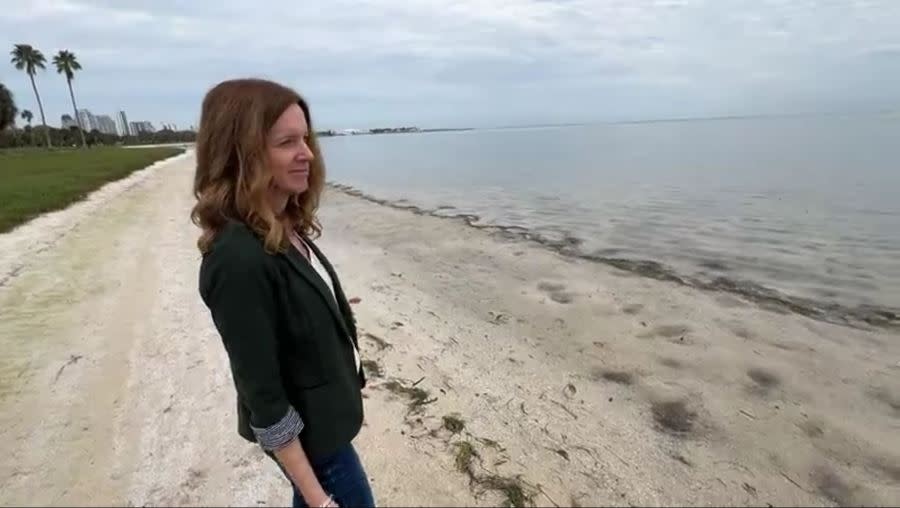Safeguarding the shore: WFLA Remarkable Women finalist Hilary Stockdon
ST. PETERSBURG, Fla (WFLA) ꟷ It’s a long string of numbers and symbols, and although it doesn’t make much sense to the average person, this is an equation that has the potential to help keep people living along the coast safe from harm. It’s a formula that scientists all over the world use, and it bears the name of Remarkable Woman finalist Hilary Stockdon.
When asked about her occupation, Hilary simply responds, “I am a coastal scientist.” A modest statement since she is responsible for the U.S. Geological Survey’s Coastal and Marine Resources Program. Program scientists monitor and study more than 95,000 miles of vulnerable U.S. shoreline, including Puerto Rico, the U.S. Virgin Islands, and Pacific territories.
“My career has been centered on understanding how our coastlines respond to different forces like waves or storms, and creating models that will describe what might happen in the future,” she explains.

For Florida, that may mean storm surge, flooding, and erosion. The research helps local and federal agencies, like NOAA, and FEMA understand, prepare, and inform the public about coastal hazards Hillary’s work includes the Stockdon equation, a formula she developed and that bears her name. The equation is used globally to anticipate the speed and height of rising water, called wave run-up.
“With this equation, if you know something about offshore wave conditions like the height, or the wave period, and beach slopes, or the shape of the beach, you can then predict how high the water levels are going to be,” she says.
WFLA Remarkable Women finalist Laura Bray: Fighting to end drug shortages
The Stockdon formula factors in wave action, something she says had been missing prior to the equation’s inception in 2006.
Hilary’s love affair with science began early.
“As a child I just loved being outside. I loved beaches. I also asked a whole lot of questions of people.” This led to college, graduate, and doctoral studies in oceanography.”
Part of Hilary’s mission is to bring what is learned through climate science and research to the public.

“We talk to the people in the communities—emergency managers, local governments—to help them to understand what the challenges are, what they’re facing along coastlines, or with ocean environments, and then target our research to being able to answer those questions and really provide them with information they need to make tough decisions about living along the coastline. ”
Her duties also include determining where government funding is needed and how it’s distributed.
Hilary does believe the climate is changing.
“We are seeing more hazards, more flooding than we used to, because sea levels are creeping up. So, places that, say fifty years ago didn’t see the impacts of storms, are starting to see that now. “
Her busy life also includes raising her two children and passing on a love and appreciation for nature.
“My daughter is a college student at Florida State, and she is studying environmental science, and loves the water, and spends a lot of her time surfing, scuba diving and also really passionate about the environment. And then my son is in high school in St. Petersburg and he also loves being outside and he also loves being outside, in boats, exploring the outdoors and also games and typical teenage boy stuff. “
Hilary finds time to mentoring aspiring environmental scientists, especially women. She believes it helps people better understand the world around them and communicate with each other.
For the latest news, weather, sports, and streaming video, head to WFLA.

